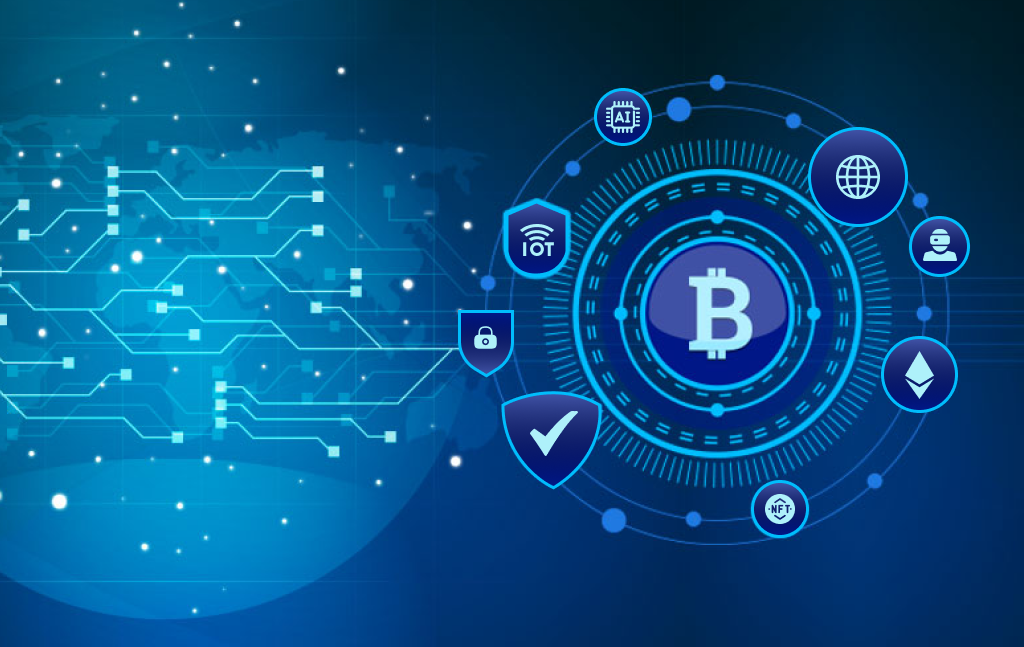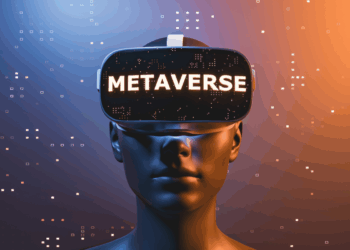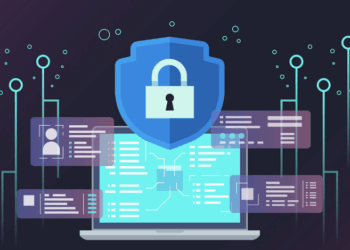The Antiquated Framework: Why Digital Contracts Fail Us
In the age of instant communication and global commerce, the process of drafting, executing, and enforcing legal or commercial agreements remains surprisingly complex, expensive, and fragile. The current landscape of digital contracts is fundamentally flawed, relying on centralized authorities—banks, lawyers, or single corporate servers—as intermediaries of trust. This reliance introduces several critical vulnerabilities: the potential for data tampering, the high cost of dispute resolution, slow execution times, and a pervasive lack of transparency.
Every time a company relies on a third party to verify a contract signature, process a payment conditional on an event, or audit a transaction history, they expose themselves to risk. Traditional digital systems are centralized, making them single points of failure—vulnerable to hacks, downtime, or manipulation by a single administrator. This structural weakness necessitates a paradigm shift in how digital agreements are formalized and enforced.
The solution is not merely an improvement to existing software; it is a fundamental architectural change provided by Distributed Ledger Technology (DLT), specifically blockchain. By moving the bedrock of contractual relationships from a centralized filing cabinet to a global, immutable, and cryptographically secured ledger, blockchain technology is not just digitizing contracts—it is revolutionizing the concept of trust. This exhaustive exploration will delve into the technical, economic, and legal architecture that allows blockchain and its powerful derivative, the Smart Contract, to securely underpin the next generation of global digital commerce.
Decoding the Fortress: Blockchain’s Core Security Principles
To understand how blockchain secures digital contracts, one must first grasp the core mechanisms of the underlying Distributed Ledger Technology (DLT). Blockchain’s security is not derived from a single authority but from a combination of mathematics, network effects, and architectural design.
The Immutable Ledger and Cryptographic Hashing
The foundational layer of blockchain security is its structure: a chain of blocks. Each block contains a batch of validated transaction data. The true security is established by the linkage between these blocks through cryptographic hashing.
- Sequential Hashing: When a block is finalized, it is assigned a unique cryptographic hash—a fixed-length string of numbers and letters generated by a complex algorithm (like SHA-256). Crucially, this hash is generated not only from the data within the current block but also includes the hash of the immediately preceding block.
- The Immutability Guarantee: If an attacker attempts to alter a single digital contract within an older block, the block’s hash will instantly change. Since the hash of the preceding block is baked into the next block’s hash, this change would propagate forward, invalidating every subsequent block in the chain. Correcting this chain of invalidation requires re-computing the hashes of the entire subsequent history, a computationally impossible task for a single entity on a secure, large network. This architectural feature is the core of immutability.
- Decentralized Time Stamping: Every transaction and contract execution recorded on the blockchain is permanently time-stamped. This irrefutable chronological record eliminates disputes over when an agreement was executed or an event occurred, providing a transparent and verifiable audit trail that is crucial for legal and financial compliance.
Decentralization and Consensus Mechanisms
Security is further reinforced by distributing the ledger and establishing a communal agreement process known as consensus.
- Distributed Copies (Decentralization): Instead of one central server holding the contract data, thousands of independent computers (nodes) across the globe hold a complete, synchronized copy of the entire ledger. A successful attack would require simultaneously compromising 51% or more of the network’s computing power (the 51% Attack), an increasingly costly and impractical endeavor for large public blockchains like Bitcoin or Ethereum.
- Proof-of-Work (PoW): Historically, PoW (used by Bitcoin and earlier Ethereum) required Miners to expend massive amounts of computational energy to solve a complex puzzle before adding a new block. This energy expenditure served as the economic cost of creating consensus, making malicious block creation prohibitively expensive.
- Proof-of-Stake (PoS): Newer and upgraded DLTs, including modern Ethereum, use PoS. In this model, Validators stake (lock up) a quantity of the native cryptocurrency to earn the right to propose and validate new blocks. Any malicious behavior, such as attempting to validate a fraudulent contract, results in the validator losing their staked funds (slashing), providing a strong economic deterrent against foul play. This mechanism ensures network integrity without the massive energy consumption of PoW.
 Smart Contracts: The Automated Enforcement Mechanism
Smart Contracts: The Automated Enforcement Mechanism
The application layer of DLT, where digital contracts truly come to life, is the Smart Contract. Coined by cryptographer Nick Szabo in the 1990s, the smart contract is a self-executing agreement where the terms of the buyer-seller agreement are written directly into lines of code.
Defining and Executing Smart Contracts
Smart contracts go far beyond simply recording a traditional legal document; they represent a fundamental shift from a trust-based system to a trustless system.
- Code as Law: A Smart Contract is essentially a piece of software that lives on the blockchain, governed by the following structure: “If X condition is met, then Y action is executed.” For example, IF the shipment tracking status changes to ‘Delivered’ AND the inspection report is uploaded, THEN release payment from the escrow wallet.
- Automated, Unstoppable Execution: Once deployed to the decentralized ledger, the contract’s code executes automatically and exactly as programmed, without the need for lawyers, notaries, or bank intermediaries. Because the code is on the immutable ledger, the execution cannot be reversed, halted, or altered by any single entity, including the parties who created it.
- The Role of Oracles: Smart contracts often require external, real-world data (like stock prices, weather conditions, or delivery status) to trigger their execution. These external data feeds are provided by specialized, decentralized data providers called Oracles. Secure Oracle networks (like Chainlink) ensure that the data fed to the smart contract is tamper-proof and accurate, protecting the contract from external manipulation that could lead to unfair or incorrect execution.
Smart Contract Architecture and Logic
The underlying design of smart contracts is built to handle complexity while prioritizing security and transparency.
- Deterministic Logic: Smart contracts must be deterministic, meaning that given the same input, they will always produce the same output, regardless of when or where they are executed. This predictability is vital for securing financial and legal agreements.
- Execution Environment: Smart contracts run inside a virtual machine specific to the blockchain (e.g., the Ethereum Virtual Machine or EVM). This virtual machine isolates the contract execution from the rest of the network, preventing code errors or malicious logic in one contract from destabilizing the entire blockchain.
- The Gas Mechanism: To prevent the execution of endless or malicious code that would clog the network, every action taken by a smart contract requires a fee, known as Gas. This mechanism economically rationalizes computation, ensuring that resources are only expended for legitimate contract execution and further securing the network against Denial-of-Service attacks.
The Transformative Security Benefits for Digital Agreements
The marriage of blockchain’s DLT backbone and the self-executing nature of smart contracts provides security and efficiency benefits that are unattainable in legacy contracting systems.
Core Security Advantages over Centralized Systems
- Irrefutable Immutability: Unlike cloud-based documents which can be quietly altered or deleted by a centralized administrator, once a smart contract is deployed and an event is recorded on the blockchain, that record is permanent. This establishes the highest possible standard of data integrity for contractual terms and transaction history.
- Reduced Counterparty Risk (Trustlessness): Smart contracts eliminate the need for trust between parties who do not know each other. Instead of relying on a human intermediary (like an escrow agent), the parties rely solely on the immutable code and the decentralized network to enforce the terms. This radically lowers the risk of fraud or non-performance.
- End-to-End Auditability and Transparency: Every step of a contract’s lifecycle—from its deployment to every single automated execution—is publicly visible (though often pseudonymous) and verifiable on the distributed ledger. This unparalleled transparency makes compliance and auditing instant and straightforward, drastically reducing legal overheads associated with dispute discovery.
- Unmatched Availability and Resilience: Since the contract code and its state are replicated across thousands of independent nodes globally, the system is highly resilient. It cannot be shut down by a server failure, a local power outage, or a political decree in any single jurisdiction, guaranteeing continuous contract execution and data availability.
- Automated Compliance and Penalty Enforcement: The code can be programmed to automatically enforce penalties. For example, if a supplier misses a delivery deadline (data fed via an oracle), the smart contract can instantly and automatically initiate a pre-agreed fine deduction, removing human delay and emotional bias from the enforcement process.
Real-World Impact: Revolutionizing Contractual Industries
The benefits of secure, self-executing digital contracts are already driving massive shifts across major global sectors, demonstrating the practical application of this foundational technology.
Industry-Specific Applications and Security Gains
- Supply Chain Management: Smart contracts secure every leg of a shipment journey. A contract can automatically release payment to the transporter only when GPS data confirms the goods have crossed a border, or when temperature sensors (IoT devices) confirm that cold-chain integrity has been maintained. The immutable record of ownership and condition eliminates disputes over liability for damaged goods.
- Financial Derivatives and Decentralized Finance (DeFi): In the financial world, smart contracts power automated agreements such as loans, swaps, and stablecoins. These agreements are transparently governed by on-chain code rather than opaque, centralized institutions, securing user funds against institutional mismanagement and enabling immediate, secure liquidation or collateral release based on market data feeds.
- Real Estate and Property Transfer: Property titles and escrow payments can be tokenized and governed by smart contracts. The transfer of title is secured by DLT’s immutability, and the payment is released automatically once the digital title is confirmed as belonging to the buyer. This removes the need for costly and slow traditional title companies and notaries.
- Intellectual Property (IP) and Royalties: Artists and creators can embed royalty agreements directly into digital assets (NFTs). Every time the asset is resold on a secondary market, the smart contract automatically executes, securely sending a pre-programmed royalty percentage back to the original creator’s wallet. This is an entirely trustless and auditable system for revenue distribution.
- Digital Identity and Legal Signatures: Blockchain can anchor digital identity records. Contract signing becomes a cryptographic process where unique private keys sign the contract’s hash. This cryptographic signature is far more secure and less prone to forgery than a digitized wet signature, and the resulting verification is permanently recorded on the immutable ledger.
 The Road Ahead: Navigating Challenges and Future Growth
The Road Ahead: Navigating Challenges and Future Growth
Despite the revolutionary security and efficiency that blockchain brings to digital contracts, challenges remain that must be addressed for widespread enterprise adoption.
Current Limitations and the Path to Ubiquity
- The Code is the Contract—and the Bug: The immutability that provides blockchain’s greatest security is also its greatest weakness when code is flawed. If a bug or exploit exists in the smart contract’s code when it is deployed, that vulnerability is permanent, and cannot be patched without the complex process of migrating assets to a new, corrected contract. Robust auditing and formal verification practices are essential mitigations.
- Legal and Regulatory Uncertainty: The legal enforceability of a purely self-executing, decentralized smart contract is still evolving across many jurisdictions. Courts are grappling with how to apply traditional contract law (e.g., force majeure, breach, and jurisdiction) to an agreement that operates autonomously across the globe. The industry is moving towards Ricardian Contracts, which link human-readable legal text with the underlying code.
- Scalability and Interoperability: Early DLTs faced challenges processing contracts and transactions at the high volume required by global commerce (low transaction throughput). While newer Layer 2 solutions (like rollups and sidechains) have drastically increased speed and reduced gas fees, interoperability between different blockchain networks remains a technical hurdle for complex, cross-chain digital agreements.
- Data Privacy vs. Transparency: Public blockchains offer transparency, but many enterprise and legal contracts require confidentiality. This has led to the development of private/permissioned blockchains (like Hyperledger Fabric) and cryptographic techniques like Zero-Knowledge Proofs (ZKPs), which allow the verification of a contract’s truth without revealing the underlying sensitive data.
The trajectory of digital contract security is clear: it is moving toward decentralization, automation, and cryptographic immutability. As these technical challenges are resolved and regulatory clarity emerges, smart contracts built on DLT will become the standard operating procedure for virtually every commercial and legal agreement, securely underpinning the digital economy of the future. The transition from paper agreements to digital code represents one of the most significant revolutions in commerce since the double-entry bookkeeping system.












